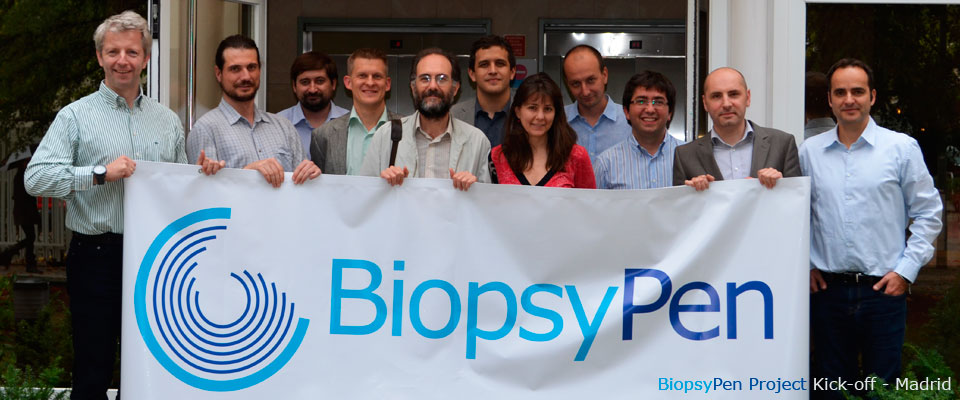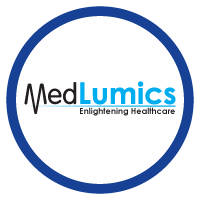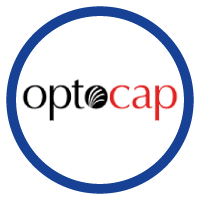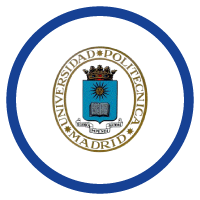
MedLumics, SL (Coordinator) – Spain [MED]
MedLumics SL, is a medical device company created in 2009. It specializes in biophotonics. This, together with a unique technology base for the miniaturization of OCT instruments has allowed the company to obtain solid financial support, from general VCs (Caixa Capital Risc) and biotech focused venture funds (Ysios Capital Partners).
MedLumics is a medical device company specialising in optical coherence tomography (OCT) a diagnostic imaging modality with important applications in ophthalmology, cardiology, dermatology and other fields of medicine. MedLumics has proprietary technological advantages allowing it to dramatically reduce the complexity, cost and size of current systems.
These technological advantages are being protected through five international patents. The company has developed several prototypes focused on the technical feasibility of its approach and is currently working on the development of its first clinical products. Experience and role in the project: MedLumics’ R&D team has competences in four key areas to this project: planar waveguide technology, silicon microfabrication technology, medical instrumentation and imaging, and medical signal reconstruction, processing and visualisation. MedLumics will be the coordinator of the BiopsyPen consortium and of the WP6, System integration. Its role will also include key contributions in WP2, WP3, WP4, WP5 and WP7.
Medical University Vienna – Austria [MUW]
Medical University of Vienna, in particular of the Center of Medical Physics and Biomedical Engineering (CMPBME) is multidisciplinary research collaboration across a range of disciplines to develop non-invasive, in vivo three-dimensional (sub)-cellular resolution molecular and functional imaging technology that has significant diagnostic value in a variety of medical fields.
More than 3% of all OCT publications (around 6000) have been published by current and previous members of this Center, leading in Europe and the second-best scientific OCT output worldwide (Massachusetts Institute of Technology (MIT), USA about 3.75%, OCT publications). The Center provides a whole set of research infrastructures dedicated to research in biomedical imaging.
This central location allows for collaborative research projects focused on improved medical diagnosis and treatment with clinical departments of the Allgemeines Krankenhaus (AKH), including the Departments of Dermatology, Radiation Oncology, Radiology, Nuclear Medicine, Ophthalmology and Clinical Pharmacology.
VTT – Finland [VTT]
VTT has 70 years of experience in addressing the needs of industry and the knowledge-based society. It is a government organization established by law and operating under the auspices of the Ministry of Employment and the Economy. VTT is an impartial non- profit expert organization acting independently in respect of its customers. Its objectives are to create high level scientific and techno-economic knowledge and know-how and to generate technology and innovations for industry and society. VTT improves its clients’ technological and economical competitiveness and promotes socio-political planning and execution.
VTT is the largest public multi-technological applied research organisation in Finland and Northern Europe. VTT’s technological focus areas are applied materials; bio and chemical processes; energy; information and communication technologies; industrial systems; micro-technologies and electronics; and services and the built environment.
In particular, VTT has developed novel bends, mirrors and couplers that lead to ultra-small device footprints, as well as world’s fastest waveguide-based thermo-optic phase modulators. VTT will lead WP3 and will have the main responsibility for developing the photonic OCT chips on its SOI waveguide platform, which is developed further in the project.
TU Delft – The Netherlands [TUD]
Dimes (Delft Institute of Microsystems and Nanoelectronics) is a multidisciplinary research school embedded in the Delft University of Technology (TUD). Dimes integrates nanoscale and high-speed device physics, material science and process technology, MEMS (‘Micro Electromechanical System’) and circuit design, and embedded system design methodology in one institute. The research focus of Dimes is to explore the boundaries of engineering possibilities, both in present-day and future applications of silicon and silicon-based technology.
Dimes has a facility for the processing of integrated circuits and MEMS (‘Micro Electromechanical System’) devices, managed by the head of the Dimes Technology Center (DTC).
Dimes/TUD will therefore lead the WP4 related to the design, fabrication and characterisation of the MEMS (‘Micro Electromechanical System’) actuators and contribute to integration and assembly issues.
EXALOS AG – Switzerland [EXA]
EXALOS AG is a privately-held, technology-driven Swiss company that focuses on the design, development and sales of advanced broadband light sources. These are based on semiconductor optoelectronic technologies, e.g., Superluminescent Light Emitting Diodes (SLEDs) and swept source lasers.
All light source products are tailored to scientific and industrial applications in markets including fiber-optic gyroscopes, Optical Coherence Tomography (OCT), fiber-optic test equipment and fiber-optic sensors. The company is the world-leading supplier of SLEDs and an established partner for custom OEM solutions where SLEDs and swept sources are combined with driver electronics and optical components.
EXALOS is today one of the key SLED suppliers of existing OCT system worldwide, as well as swept source lasers. EXALOS will develop and deliver 1300nm SLEDs with optimized waveguide angels and far field matched to Si-waveguides.
Universidad Politécnica de Madrid – Spain [UPM]
Universidad Politecnica de Madrid (UPM), the largest and oldest of the technical universities in Spain, participates in this project through its research group Biomedical Imaging Technologies (BIT). BIT has been working since 2000 towards improving health care delivery through advances in biomedical imaging technologies. Its main objective is the application of technological solutions to actual clinical or biological problems, especially with the aim of early diagnosis.
BIT-UPM coordinates WP5 due to its expertise in biomedical image processing and analysis. Its main responsibility will be the design and development of efficient signal and image processing technologies that will enable the reconstruction and enhancement of 2D and 3D OCT images, assuring the diagnostic quality required at the point-of-care.
UPM will also collaborate on the system integration WP6 contributing with its expertise in system on chip (SoC) image acquisition systems and on the validation of the tools developed.
Optocap Ltd. – UK [OPT]
Optocap Ltd is an Assembly and Packaging subcontractor for Microelectronic and Optoelectronic devices based in the UK.
Optocap utilises its technology and process know-how in a wide variety of optoelectronic and microelectronic platforms including flip chip assembly, system-in-package assembly, RF assembly, high power laser diode assembly and fiber coupling of optoelectronic devices.
Optocap will be responsible for the package design and assembly of the Si photonic devices. This will involve design of the packages and components including thermal, mechanical and optical design activities and development of precision assembly processes.
Optocap will determine the required environmental operating conditions of the package and ensure that the package design provides suitable environmental protection. Optocap then will assemble the package with appropriate interconnections. Optocap will apply design for manufacturing techniques to ensure that the package design is compatible with standard assembly techniques such as die attach and wire bonding.

















